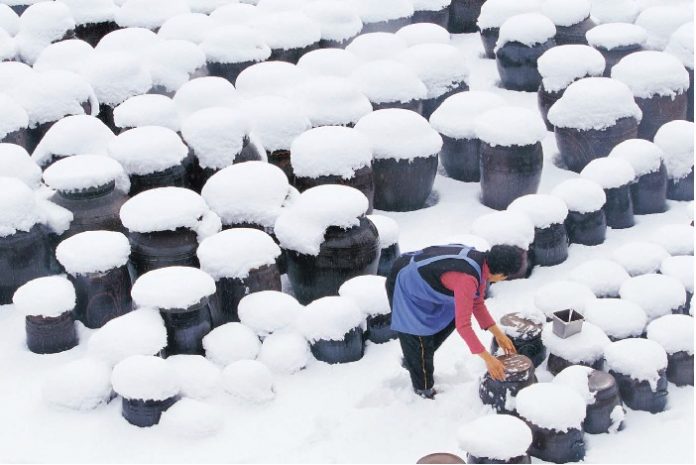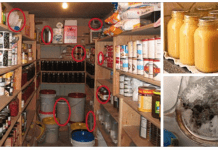Would you know the word ‘starving spring’? What about “the hungry gap”? Okay, those were two words that reflected the average person’s struggles to store enough food to support themselves and their families, pre-convenience foods.
Winter would end, but there wouldn’t have been a field for months to harvest yet. Animals would be scarce, so it would take a couple of weeks or more to get something ready to hunt or eat. This issue has been exacerbated by spring being a time of hard work for those who settle on the land.
Spring is a time to till and to plant. It means the food needs are on the rise. Despite an increased calorie intake, we are faced with a dilemma easily. Thus, the names listed above.
You would starve to death without having enough provisions kept. This was the case in Jamestown in the winter of 1609 to 1610, where by starvation 500 settlers reduced to a mere 60. These survivors jumped on a ship and headed to Chesapeake Bay where they set to arrive another supply ship.
So what did people bury underground trying to stave off the hungry spring.
Burying Grains And Vegetables
You would need to either cover the food and separate it or leave it in the field to make fresh grains and vegetables last as long as possible. While the root cellar is one of the best options, it is no longer something that most Americans are prepared to invest in.
Underground Silo
The underground silo is one much more affordable option. A fairly wide hole is drilled into the ground about three feet, and filled with bricks. The covering of the brick would protect the underside and the walls.
The underground silo is scaleable, so you can make it as big or as small as you want. You can also make several silos which are used for different foods.
A solid cover made of stone, metal, or thick wood and rope will top the underground silo. You may hide the lid in harsh climates, as well.
You want to lay the food between dry leaves while storing food in these silos. So start with a thick layer of dry leaves at the bottom, then a layer of potatoes, followed by a layer of dry leaves and another layer of potatoes.
Lid and leaf insulation will protect your food through the winter.
Related: 12 Things You Forgot to Add to Your Stockpile
Leave ‘Em In The Ground
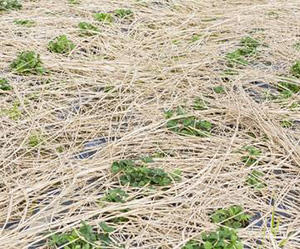

There are certain foods that can benefit from being left in the ground for the whole winter. This is an equally old way of burying food for the winter – only you’ll leave the food buried! Ignore the shovel on this one. The only other material you will need is straw to insulate some of the plants above ground.
Things like carrots and garlic would have no trouble over-wintering in the field.In moderate to cold climates kale, Brussels and some of the hardier greens will also make it through most of the frost. If you’re concerned, then you can use the straw to completely cover them.
Straw can be used at the coldest nights, or all the time, if you live in a very cold place. This method won’t work for things like tomatoes and peppers, but on hardier lettuces, greens and root vegetables, it will do fine.
Burying Meats
Burying meat is a tedious task, but it is possible. You’ve got to be very careful about oxygen and humidity. The very best way to successfully bury meat is to use the animal’s fat as an external moisture and oxidation defense.
The Iroquois Method
This method of burying meat is very fascinating and helps the survivor to kill several sections of an animal. If you kill a deer and remove the innards, keep any intestines and thoroughly wash them out.
You can cut the intestines using multiple lengths and tie knots at one end of each. Using raw meat to fill the open end, form it into a ball and tie the end to seal.
Then scrape the hide to get as much fat as you can. Render it and pour the fat over your intestine balls. Make sure to do it in a jar, so you don’t lose the precious fat that has been made.
Let the fat cool down and bury three layers of the meat underground. The meat will last 100 years, the Iroquois claimed!
The Confit Method
Cooking food is a great way to create meltingly tender cuts of meat in its own fat or “confit.” This approach is most commonly used on duck legs. The French created the confit method and today, you still find it on swanky menus.
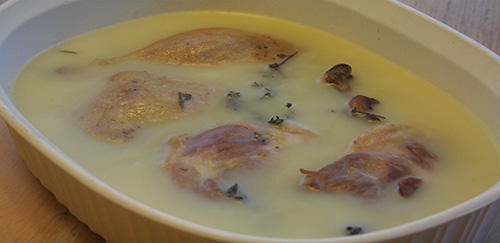

What most people do not realize is that it can be cooled after cooking meat in this way and the fat that surrounds the meat will harden and protect it from the outside world. Containers of earthenware, or even a good cast iron with a lid, could be buried during wintertime.The fat cap or shield that protects the meat will keep it secure until temperatures rose high enough to melt it.
Salt your meat overnight to keep the fat out of your duck skin-or you can use chicken to coat the meat with something like lard. Cook low for a few hours to about 270 degrees. Let the legs cool, and that fat cap will harden in the cold weather. To discourage predators, cover and bury at least three feet deep.
Burying Long Term Food Storage
Of course, there’s the long-term food storage locker option as well. While it may serve a particular function, it might be useful. You would not bury your long-term food storage for preservation from the harsh cold of winter. You might however consider burying your food storage to protect it from other hungry people around you.
You can’t give away food in your pantry that you don’t have.
Sturdy 5-gallon buckets are going to do just fine and if they’re fitted with a mylar lining and an oxygen absorber you’re going to have something nice. If you’ve decided to bury a few reserve food pails, or bury them at a bugout location, be sure you’re doing that in secret. This method is about preserving by hiding.
Related: Food Bars, Crackers and Cakes for Preppers
Fermenting In The Ground
One angle you can take is use fermentation when burying food during winter. Fermentation is the mysterious method of breaking down the food and making something fresh and tasty over time.
Fermented foods most widely used are items like pickles, chocolate and tea.
It is very popular in Korea to take Napa cabbage and smother it with red chili powder, fish sauce, garlic and ginger, then bury it in containers made from earthenware. That mixture can ferment in the ground over time to become what is known as Kimchi.
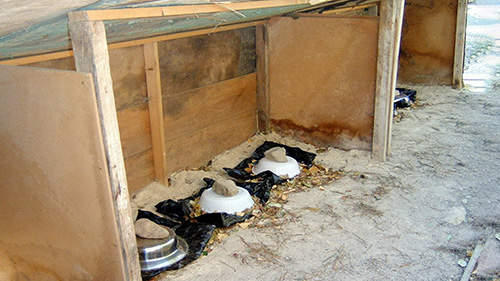

Now the curious thing about burying kimchi is that in its fermentation, a 6-month-old kimchi is considered new. I can’t think of a better food to bury and have spring ready.
You might consider burying sauerkraut if you are looking for something more familiar. It’s just one of those wonderful foods to ferment that gets better with time. Within these foods, too, the beneficial bacteria can proliferate over time.
When you’re looking into the winter to bury food and protect it, there are several methods. Deciding which path to take depends on what you’ve evolved this year, and what you’re hoping to do when the cold stops.
All the above methods are cheap to execute. Why not try out a couple of different methods to see what works best for you? Now is a time of prosperity and harmony. Now is a time to test.
We’ve learned so much from past failures. Let’s not fall prey to the “starving time” that struck those unfortunate Jamestown settlers. Instead, we have the resources and the smarts to store and unearth plenty of food through the bitter winter before our first spring sprouts.



